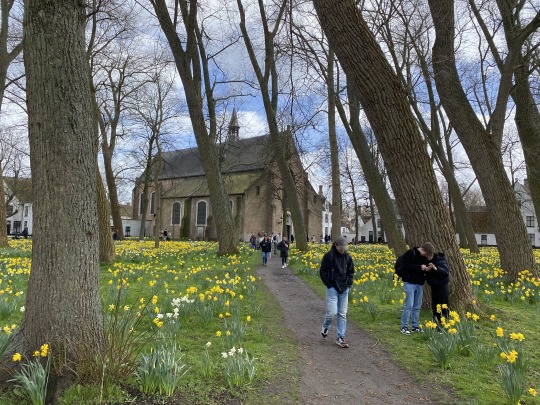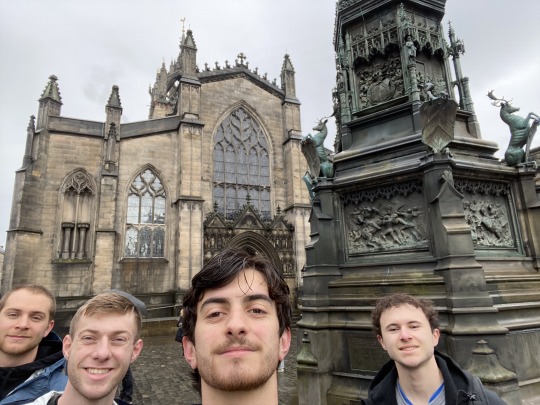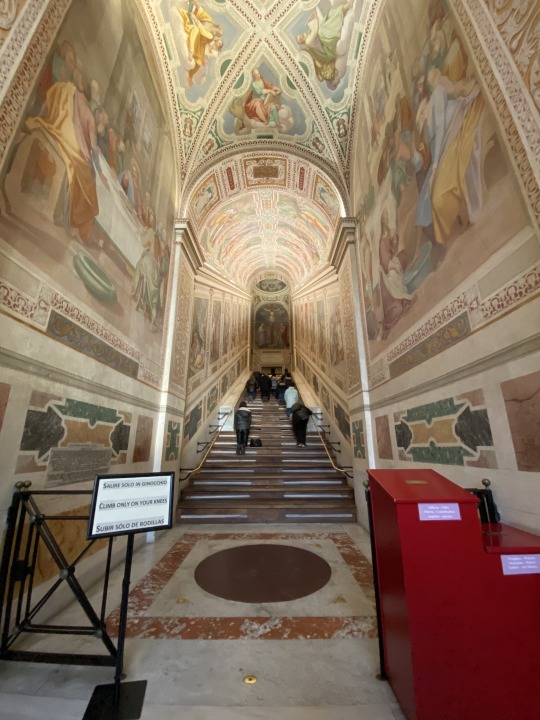Don't wanna be here? Send us removal request.
Text
The Beguinage - Bruges


I chose this place because I was curious to see how a quaint community of nuns could have possibly made a controversial splash during the Reformation movement.
The Beguinage's connection to the Reformation movement occurs during the Protestant control of Bruges in the mid 1500s. The Calvinist principles that ruled the land determined to force the beguines to leave their homes.
The beguines approach to Christianity, ironically, contributed to the development of the theology present among reformers. These women believed in the possibility of a personal relationship with God––a foundational Protestant belief.
I found the Beguinage interesting because it felt as though I was not supposed to be there. The area felt too intimate, like I had just stepped back in time into a neighborhood I had no business being in. Yet, so many tourists were welcome on the beguines' grounds.
0 notes
Text
St. Giles Cathedral - Edinburgh

I chose this cathedral because I found it to be one of the most beautiful buildings I have visited so far on this trip. The stained glass and intricately carved wooded furniture set a surreal scene.
This place is both rich in beauty and Reformation historical significance. The most prominent man of the Reformation to live in Scotland, John Knox, preached at St. Giles. Within two weeks of his arrival, he was elected the minister of the church and removed all Roman Catholic imagery and objects. Later in 1559, the church was reestablished as Roman Catholic but was turned back over to John Knox the following year.
One thing that surprised me about this cathedral was the set up of the pews. This may be common practice in Protestant cathedrals, but it was new to me. The pulpit sat in the center of the nave and the pews surrounded it.
0 notes
Text

Westminster Abbey - London
I chose this site because of its cultural significance to the United Kingdom not only for religious history but for political history, as well. Every British sovereign has been crowned in the Abbey since William the Conqueror in 1066 save Edward V and Edward VIII. It has also been the venue for many royal weddings. The tombs as many famous British people are held here, such as Isaac Newton and Geoffrey Chaucer.
After Henry VIII's separation from the Catholic Church, Westminster Abbey's relics and images were removed and the king took control of the Abbey. The Abbey was also was given cathedral status during this time which saved it from destruction.
One thing that surprised me about this building was the modern statues that lined the door. Some men and women from the 20th century were featured, such as Nelson Mandela and Martin Luther King Jr.. I had yet to see any statues of people prior to the 1800s at that point.
0 notes
Text

St. Paul's Cathedral - London
I chose this site because of its role in the quelling of Separatist thought early in the Reformation movement. In 1521, Cardinal Wosley and the Archbishop of Canterbury along with many other church leaders entered St. Paul's and denounced Martin Luther in a series of sermons. An estimated 30,000 people listened to these sermons. A papal bull against Luther was posted on the door of the cathedral. The cathedral doors were later vandalized with Reformationist literature.
I was surprised by the sheer size of this cathedral. The design, apparently, is heavily modeled after St. Peter's Cathedral. Its designer, Sir Christopher Wren, drew heavily from Michelangelo in his inspiration of the design of St. Paul's.
0 notes
Text
Sancta Scala, Rome

I chose this location because of how it astounded me when looking at it. Watching the people in prayer crawl up slowly made me think about both the power of relics and the power of the moment in Christ's life that these stairs played a part in. Regardless of one's belief in the legitimacy of relics, one cannot deny their power on many believers. They can connect the believer to the story and build their faith. In a way, they can become a thin spot between the world and heaven.
Where this object and the Reformation connect is in Martin Luther's visit to Rome in 1510. Luther visited these stairs and climbed them to obtain a shorter time in purgatory for his dead grandfather. At the top of the stair, he allegedly stated, "Who knows if it is really true?"–– a question that would serve as the foundation for his view of church doctrine.
I took the opportunity to kneel on the first step of the stairs. Immediately, I noticed the indentations on the wood coverings that had grown deeper over decades. Thousands of believers had kneeled on the same steps as me, feeling unworthy to walk where their savior had walked. I also noticed how difficult and painful it was to climb up the stairs like that–– a literal example of trying to follow Jesus' path.
1 note
·
View note